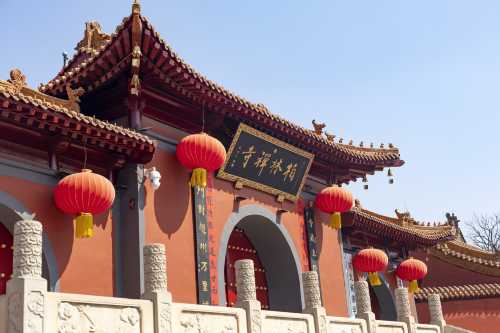App
Customer Support
NZD
Find Bookings
Popular Trip Moments
Cherry Blossom 🌸 trip to Shijiazhuang | Yongtong Bridge Park | Follow the melody and embark on a fantastical journey through Shijiazhuang. | Do you still remember Zhaozhou Bridge? | Enjoy City Views in Shijiazhuang | Shijiazhuang 2-Day Tour | Detailed Guide to Shijiazhuang | Weekend Beijing ⇄ Shijiazhuang Museum Free Tour | Explore Zhaoxian County in Shijiazhuang. | Bailin Temple | Berlin Temple Pagoda | Travel in Zhaoxian, Shijiazhuang | Just returned from Shijiazhuang, this obscure ancient pagoda is more worth visiting than the Zhaozhou Bridge | Berlin Zen Temple | Shijiazhuang - Berlin Zen Temple is late | Travel with books, the Zhaozhou Bridge of more than 1400 years | Take a tour around Zhao County, Hebei Province | Hebei·Shijiazhuang & Zhao County·Zhaozhou Bridge | Three-Day Tour of Shijiazhuang: Zhengding Ancient City~Zhaozhou Bridge~Hebei Museum | The Architectural Gem: Exploring the Charm of Zhaozhou Bridge | Chasing Autumn Around the World | Hebei’s Secret Berlin Zen Temple | Zhaozhou Bridge | Shijiazhuang Surrounding Tour-Zhaozhou Bridge
Popular Travel Types
Recommended Attractions at Popular Destinations
Bangkok attraction near me | Manila attraction near me | Tokyo attraction near me | Taipei attraction near me | Hong Kong attraction near me | Seoul attraction near me | Kuala Lumpur attraction near me | Los Angeles attraction near me | Shanghai attraction near me | New York attraction near me | Shenzhen attraction near me | Osaka attraction near me | Singapore attraction near me | London attraction near me | Guangzhou attraction near me | San Francisco attraction near me | Beijing attraction near me | Macau attraction near me | Bali attraction near me | Jakarta attraction near me | Paris attraction near me | Ho Chi Minh City attraction near me | Istanbul attraction near me | Phuket attraction near me | Chicago attraction near me | Seattle attraction near me | Toronto attraction near me | Orlando attraction near me | Cebu attraction near me | Chiang Mai attraction near me
Popular Attractions
Sydney Tower Eye | Shishi Sacred Heart Cathedral | Christchurch Botanic Gardens | Bund Sightseeing Tunnel | Lujuria Swinger Club | Australian National Maritime Museum | SEA LIFE Sydney Aquarium | SEALIFE Busan Aquarium | Erlang | Haedong Yonggung Temple | Khao San Road | MOTAT Museum of Transport and Technology | Singapore Flyer | Chimelong Birds Park | Window of the World | RED HOT & BLUE PATTAYA | Germiston City Sports Grounds. | Narada Resort & Spa Qixian Mount | SEA LIFE Sunshine Coast Aquarium | Panglao Island | Arulmigu Sri Odai Mariyamman Temple | BC GHOST Bintaro | Kasegawa Dam Riverside Park | Hit Productions Inc. | Sai Baba Temple | Gomti Hospital Ayodhya Chauraha | Kawaminamiku Community Center | Corte della Sassina - Percorso didattico | zátoka Lovrecina | Central Library
Popular Restaurants in Zhao County
绿豆酥(永通路店) | 聚胜涮园(柏林大街店) | 富丽豪火锅 | 咪你蛋糕(赵县店) | JIE DI LIA TU DOU FEN | 回民食府(自强路店) | 谷连天八宝粥(赵县店) | 五谷粥香(所里北街店) | Jixianghuntun. Noodles (bolin) | JI XIANG HUN TUN MIAN XIN YU LOU DIAN | XU SHI XIANG HE ROU BING | 德克士(赵县店) | 半边天熏肉大饼(赵县店) | 特好特(李春大道店) | 宏伟饭店(驿里街店) | 新源餐厅 | 泽龙牛肉面 | 古桥老味(柏林大街店) | YI GAN CHEN MA LA TANG | Houshishuanyuan (zhaoxian) | 美国加州牛肉面大王(平棘大街店) | NA ZHUANG YANG ROU GUAN YONG AN LU DIAN | 安徽正宗牛肉板面(石塔路店) | 赵州印象酒店-自助餐厅 | 薛家烧饼驴肉老店(非饭店) | LE BAO SHI ZHAO XIAN DIAN | Xinkouweidangaocheng | 固城小香驴 | 福聚永饭店 | 好运来饭店
Popular Ranked Lists
Top 15 Local Restaurants in Tai'an | Popular Best Things to Do in Renhua | Top 4 Best Things to Do in Mohe | Top 10 Local Restaurants in Phi Phi Islands | Top 20 Local Restaurants in Leshan | Top 7 Luxury Hotels in Galle | Top 10 Local Restaurants in Melaka | Top 10 Local Restaurants in Dhaka | Popular Best Things to Do in Longchang | Popular Best Things to Do in Daocheng | Popular Luxury Hotels in Oslo County | Popular Luxury Hotels Near Higashiagatsuma | Top 4 Best Things to Do in Pyongyang | Popular Luxury Hotels Near Fishers | Popular Luxury Hotels Near Etretat | Popular Restaurants for Views & Experiences in Koror | Popular Local Restaurants in Zhongshan | Popular Luxury Hotels Near Naxos | Top 10 Local Restaurants in Kamakura | Popular Luxury Hotels in Astana | Popular Best Things to Do in Zoige | Popular Best Things to Do in Yanyuan | Popular Restaurants for Views & Experiences in Baja Sardinia | Top 10 Local Restaurants in Irkutsk | Top 10 Local Restaurants in Newcastle | Top 19 Local Restaurants in Huai'an | Top 10 Local Restaurants in Cancun | Top 10 Local Restaurants in Nagasaki | Top 10 Local Restaurants in Adelaide | Top 10 Local Restaurants in Honolulu
Payment Methods
Our Partners
Copyright © 2025 Trip.com Travel Singapore Pte. Ltd. All rights reserved
Site Operator: Trip.com Travel Singapore Pte. Ltd.
Site Operator: Trip.com Travel Singapore Pte. Ltd.














